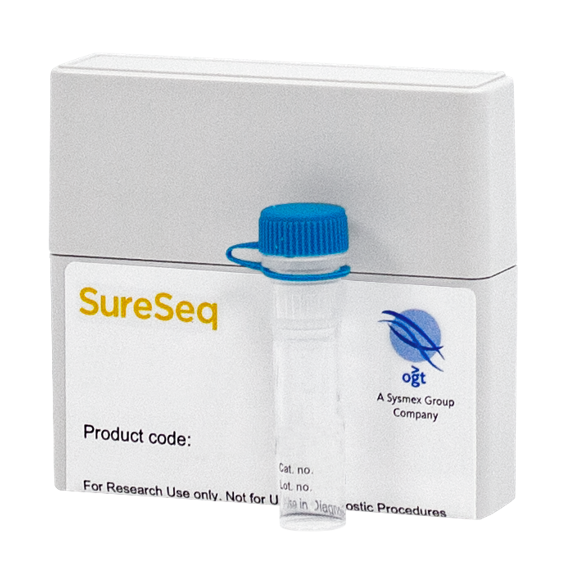
The SureSeq™ Germline Breast Cancer + CNV Panel has been developed to provide comprehensive coverage of 7 key genes implicated in breast and ovarian cancer, including BRCA1 and BRCA2 (Table 1). Detecting SNVs and indels, as well as exon-level to whole gene CNVs, the SureSeq Germline Breast Cancer + CNV Panel provides researchers with a single NGS workflow to study clinically relevant aberrations and alleviates the burden of running multiple assays.

Reliably detect germline variants in all exonic regions

Profile your samples for CNVs in all 7 genes

Streamline your laboratory workflow with a single NGS assay for a comprehensive profile of all variants of interest

Easy-to-use analysis solution for accurate detection of all variants in your panel
Loss-of-function mutations in BRCA1 and BRCA2 have been implicated in an increased risk for breast and ovarian cancer1,2. Screening for germline mutations in these genes allows research into familial risk of developing breast and ovarian cancer. Facilitated by OGT’s expert bait design, the hybridization-based SureSeq Germline Breast Cancer + CNV Panel delivers excellent coverage uniformity, allowing consistent detection of SNVs and indels (Figure 1).
To gain a comprehensive picture of breast and ovarian cancer, researchers often have to employ different methods for investigating SNVs, indels, and CNVs. The SureSeq Germline Breast Cancer + CNV Panel offers reliable CNV detection in all genes covered by the panel, ranging from single-exon events up to deletions and duplications of complete genes. The panel has been fully validated on germline samples, with CNV detection 100% concordant with MLPA data, providing researchers with a single NGS assay for profiling of CNVs in BRCA1, BRCA2 and 5 other key genes implicated in breast and ovarian cancer (Figures 2 - 3).
Interpret is OGT’s powerful and easy-to-use NGS analysis solution, facilitating analysis and visualization of a wide range of somatic variants and structural aberrations. Designed to work seamlessly with all SureSeq panels, Interpret perfectly complements the SureSeq Germline Breast Cancer + CNV Panel, delivering fast and accurate detection of all SNVs, indels and CNVs covered by the panel. Following detection, all variants can be easily visualized in the user-friendly variant browser, for an effortless translation of all your sequencing data into meaningful results.
You never have to sequence genes you’re not interested in and can always modify each panel to what’s relevant to your research. If the SureSeq Germline Breast Cancer + CNV Panel doesn’t meet your exact requirements (see table 2 for a detailed breakdown of the numbers), you can choose from our regularly updated, expert-curated library of pre-optimized cancer content to create your ideal custom SureSeq myPanel™ Breast and/or Ovarian Cancer Panel.
* Exon examples not yet available




